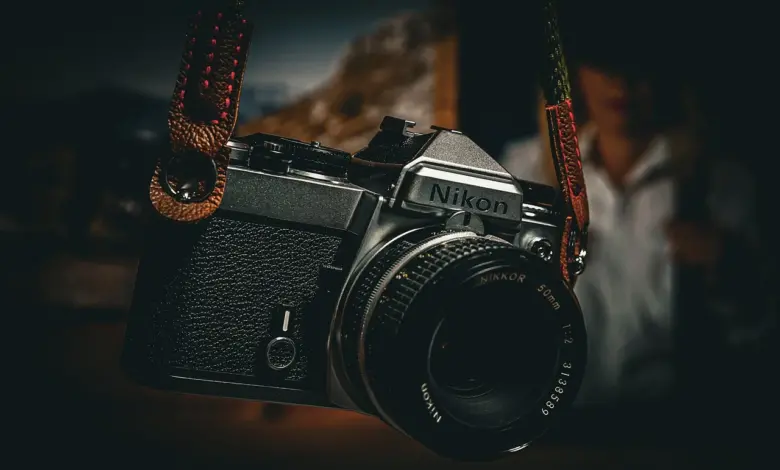
In today’s world, smartphones have revolutionized photography. With advancements in technology, even budget smartphones are equipped with high-quality cameras, allowing users to capture stunning images without the need for professional equipment. However, having a good camera does not automatically make one a great photographer. To capture truly outstanding photos, one must understand the basics of photography and how to maximize the potential of a smartphone camera. This article will provide in-depth tips and techniques for smartphone users looking to elevate their photography skills.
1. Understanding Your Smartphone Camera
The first step to improving your photography is understanding the capabilities and limitations of your smartphone camera. Most modern smartphones come with several camera features, including multiple lenses, different modes (portrait, night, panorama), and editing options. Familiarizing yourself with these features will help you make informed choices while taking pictures.
Key Features to Explore:
- HDR (High Dynamic Range): HDR mode combines multiple shots at different exposures to create a balanced image with more detail in both the highlights and shadows.
- Portrait Mode: This mode adds a shallow depth of field effect, blurring the background and focusing on the subject, making it great for portraits.
- Night Mode: Night mode helps you capture clearer photos in low-light conditions by adjusting exposure settings automatically.
- Wide-Angle and Telephoto Lenses: Many smartphones come with multiple lenses, including wide-angle and telephoto options, allowing you to capture more of the scene or zoom in without losing detail.
Pro Tip:
Spend time exploring the camera app on your phone, and don’t hesitate to experiment with different settings. Familiarity with your camera will empower you to take more controlled and purposeful shots.
2. Mastering Composition: Rule of Thirds
Composition plays a crucial role in making your photos visually appealing. The Rule of Thirds is one of the most fundamental principles of composition. Imagine dividing your screen into nine equal parts with two vertical and two horizontal lines. The goal is to place the subject of your photo along these lines or at their intersections to create balance and draw the viewer’s attention naturally.
How to Apply It:
- Activate Gridlines: Most smartphones have a gridlines feature in the camera settings. Turning this on will help you apply the Rule of Thirds more effectively.
- Off-Center Subjects: Avoid placing your subject directly in the center. Instead, position it along the gridlines to create more dynamic and engaging photos.
- Symmetry and Leading Lines: While the Rule of Thirds is essential, sometimes breaking the rule can work wonders. Experiment with symmetry or leading lines, such as roads or buildings, to guide the viewer’s eye through the photo.
Pro Tip:
After mastering the Rule of Thirds, challenge yourself by experimenting with different compositions and angles. Don’t be afraid to get creative!
3. Lighting: The Key to Great Photos
Lighting is one of the most critical elements in photography. Even with a smartphone, understanding how to work with natural light can make the difference between an average shot and a breathtaking one.
Types of Lighting:
- Natural Light: Soft, diffused natural light, such as early morning or late afternoon, is ideal for smartphone photography. These times are known as the golden hours, providing a warm, flattering light for portraits and landscapes.
- Backlighting: When shooting against the light source, you can create stunning silhouettes or rim-light effects around your subject. However, be cautious of overexposure.
- Artificial Light: If shooting indoors, avoid relying solely on your phone’s flash. Instead, use natural light sources like windows or lamps to create softer shadows and highlights.
How to Use Light Effectively:
- Avoid Harsh Light: Direct sunlight can create harsh shadows and highlights. If you have to shoot in bright sunlight, look for shaded areas or use a reflector (even a white piece of paper) to soften the light.
- Experiment with Shadows: Don’t shy away from using shadows creatively. Shadows can add depth and dimension to your photos.
- Exposure Control: Many smartphones allow you to manually adjust exposure by tapping the screen and sliding the brightness level. Practice adjusting exposure to achieve the right balance.
Pro Tip:
When shooting portraits, always ensure the subject’s face is well-lit. If possible, position your subject near a window or a source of soft light for the best results.
4. Steady Your Hands or Use a Tripod
One common issue with smartphone photography is blurry photos due to shaky hands. Since smartphones are lightweight, even a slight movement can affect the sharpness of an image. To counter this, keep your hands steady or consider using a tripod for more stability.
Tips for Steadier Shots:
- Use Both Hands: Hold your phone with both hands and keep your elbows close to your body to minimize movement.
- Leverage Objects: If you don’t have a tripod, rest your phone against a stable object, like a wall or a table, to reduce camera shake.
- Tripod and Remote Shutter: Invest in a small, portable tripod and a Bluetooth remote shutter. This allows you to take steady shots, especially in low-light conditions or when using long exposures.
Pro Tip:
When taking night or low-light shots, the stability of your phone becomes even more critical. Using a tripod can make a significant difference in achieving crisp, clear photos.
5. Utilize Editing Tools
Smartphone photography doesn’t end after you’ve taken the shot. Post-processing can significantly enhance the quality of your images. Fortunately, many smartphones have built-in editing tools, and there are also numerous apps available for more advanced editing.
Basic Edits:
- Crop and Straighten: Adjust the framing of your photo to remove distractions or align the horizon.
- Adjust Brightness and Contrast: Play with brightness and contrast levels to make your photo stand out.
- Enhance Colors: Most editing apps allow you to adjust the saturation and vibrancy of colors. Use these tools sparingly to avoid over-editing.
- Sharpen and Reduce Noise: Many photos, especially those taken in low light, may require a bit of sharpening or noise reduction to improve clarity.
Popular Editing Apps:
- Snapseed: A powerful, free app with numerous tools for fine-tuning your photos.
- VSCO: Known for its wide range of filters and editing tools, perfect for giving your photos a specific mood or tone.
- Lightroom Mobile: Offers professional-level editing features, including advanced color correction and exposure adjustments.
Pro Tip:
Less is often more when it comes to editing. Avoid over-saturating colors or over-sharpening, as it can make your photos look unnatural.
6. Capture Candid Moments
While posed photos can be beautiful, candid shots often tell a more authentic story. Candid photography involves capturing spontaneous moments, which can evoke strong emotions and create memorable images.
Tips for Candid Photography:
- Be Discreet: Try not to draw attention to the fact that you’re taking a photo. Capture people in their natural state without them being overly aware of the camera.
- Use Burst Mode: Most smartphones have a burst mode, which allows you to take several photos in quick succession. This is especially useful for capturing action or fleeting moments.
- Observe and Anticipate: The key to great candid shots is observing your surroundings and anticipating moments before they happen.
Pro Tip:
Turn off the camera sound and notifications when shooting candid photos to remain unobtrusive and avoid breaking the natural flow of the scene.
7. Experiment with Different Perspectives
A unique perspective can turn an ordinary photo into something extraordinary. Instead of always shooting from eye level, try experimenting with different angles and viewpoints.
Creative Angles to Try:
- Low Angle: Shoot from a lower perspective to make subjects appear taller or more powerful.
- High Angle: Take a shot from above to capture an interesting aerial perspective.
- Close-Ups and Macro: Get close to your subject to reveal intricate details, especially for nature shots like flowers or insects.
Pro Tip:
When photographing landscapes, consider including foreground elements (like rocks, plants, or people) to add depth and dimension to the scene.
8. Use Reflections and Symmetry
Reflections can add a striking visual element to your photos. Look for reflective surfaces like water, glass, or even puddles to create a mirror effect that can make your images more artistic.
How to Capture Reflections:
- Look for Still Water: Lakes, ponds, or even puddles after rain can provide stunning reflections.
- Symmetry: Incorporate symmetrical elements like buildings, trees, or bridges into your frame to create a harmonious, balanced composition.
Pro Tip:
When capturing reflections, ensure that the surface is smooth and calm for the best effect. Also, play with angles to align the reflection perfectly with the subject.




